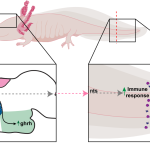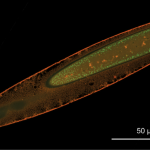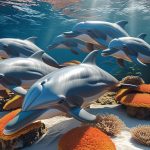Regrowing a tail or limb is fascinating enough, but what if you could regrow your entire body—from just a head? That’s exactly what some sea slugs can do. In a remarkable discovery published in Current Biology, Japanese researchers documented two species of photosynthetic sea slugs that can detach nearly their whole body, including the heart, and regenerate a new one within a few weeks.
This discovery not only reshapes our understanding of animal regeneration but also introduces a unique phenomenon: whole-body regeneration through extreme autotomy.
What Is Autotomy—and How Is This Different?
Autotomy is the deliberate shedding of a body part—seen in animals like lizards (tails), crabs (claws), and starfish (arms). However, in this case, the sea slugs (Elysia cf. marginata and E. atroviridis) take it to an extreme by shedding up to 85% of their bodies—including vital organs like the heart, kidney, intestine, and reproductive system.
What’s left? Just the head.
Yet that head can:
- Seal its wound within a day
- Resume feeding within hours (in young slugs)
- Regrow a new body—including a beating heart—in as little as 20 days
Fun Fact: This process does not happen after trauma. It’s an intentional, controlled behavior, often linked to parasite removal.
How Does the Sea Slug Survive Without Its Body?
The secret lies in kleptoplasty—the ability to steal chloroplasts from algae and harness photosynthesis.
The slug’s digestive gland, spread into its head, retains these chloroplasts. This allows the head to photosynthesize and produce energy even without eating, giving it time to regenerate a whole body.
This makes these sea slugs one of the rare examples of photosynthetic animals that can survive and regenerate without external nutrition.
Why Do They Do This?
Contrary to other animals, where autotomy serves to escape predators, sea slugs seem to use it for:
- Parasite removal: In E. atroviridis, 100% of individuals that shed their bodies were infected with the parasitic copepod Arthurius sp. After regenerating, they were parasite-free.
- Possibly detoxification or detangling from algae, although more research is needed.
Researchers observed that the behavior wasn’t triggered by fake predator attacks like pinching or cutting, but was likely governed by an internal biological mechanism, sometimes triggered by tying a fine nylon thread around the slug’s neck.
Implications for Science and Medicine
This discovery opens new doors in:
- Regenerative biology: Demonstrating that even animals with complex body plans can regenerate entire organ systems.
- Biomedical research: Studying these sea slugs may yield insights into how to reactivate regeneration pathways in other organisms.
- Parasitology and symbiosis: Introducing the concept of “parasitic autotomy” as a survival mechanism.
The authors suggest that this could establish Elysia marginata as a model organism for studying regeneration and autotomy due to its ease of rearing across generations.
Conclusion
Nature never ceases to amaze. The ability of these sea slugs to survive as just a head and regrow their entire bodies—heart and all—represents a stunning example of biological resilience and adaptation. This could transform how we think about regeneration, parasitic defense, and even animal evolution.
As research continues, these slimy superheroes might one day help unlock regenerative secrets that could revolutionize human medicine.
Reference
Mitoh, S., & Yusa, Y. (2021). Extreme autotomy and whole-body regeneration in photosynthetic sea slugs. Current Biology, 31(6), R215–R240. https://doi.org/10.1016/j.cub.2021.01.014







